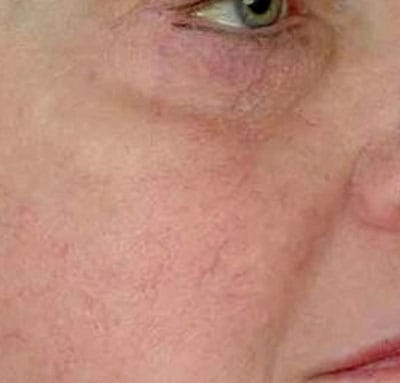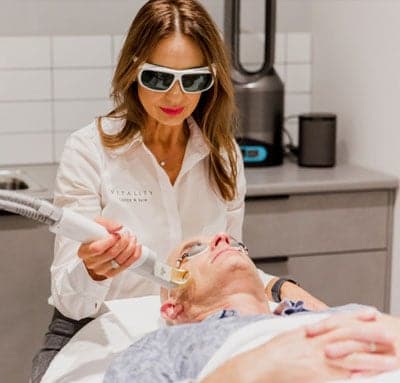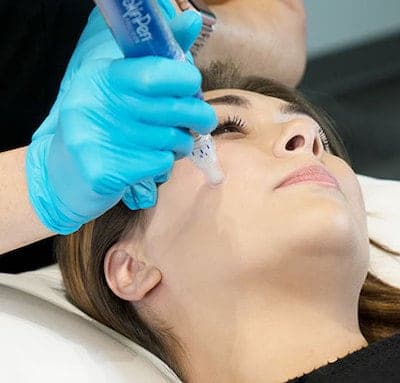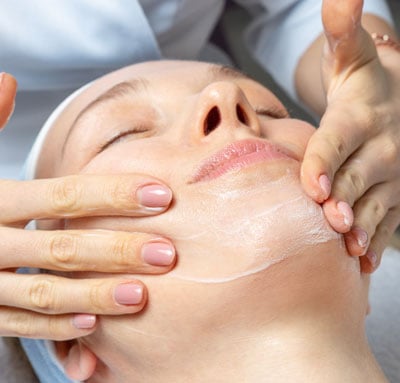Rosacea & Diffuse Redness
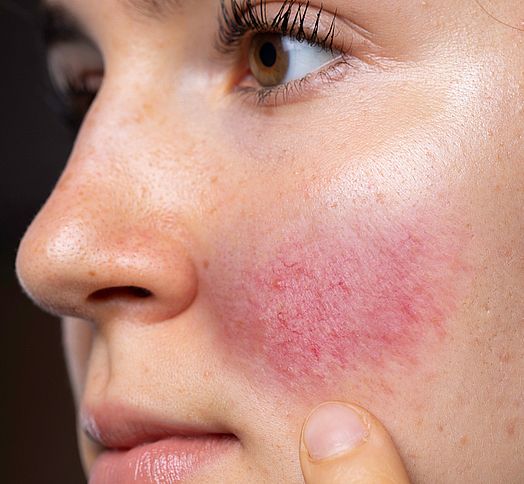
Rosacea & Diffuse Redness:
Causes, Prevention and Treatment
Seeing red? Find out what causes rosacea and diffuse redness, and more importantly – discover how it can be treated!
Rosacea is a skin condition that causes redness, inflammation, and bumps on the face.
People of all ages get rosacea (including children) and it can impact anyone, regardless of the colour of their skin. However it’s most common in women (and men) between the ages of 30 and 50 who are fair-skinned and have light hair and blue eyes.
Women are more likely to suffer from rosacea, however it’s believed that men suffer more severe symptoms.
The exact cause is unknown, but it’s believed that rosacea may be hereditary – if you suffer from it, it’s likely that someone in your family tree did, too.
Other research suggests that rosacea is triggered by a sensitivity to or a higher amount of the mite Demodex folliculorum, a microscopic being that lives within hair follicles of the skin.
What are the most common symptoms?
The most common symptoms of rosacea are mostly visible, including:
- Flushing and redness on the face, particularly around the nose, cheeks, and forehead
- Persistent redness that does not fade or subside
- The appearance of small red spider veins on the face
- Swollen or painful red bumps and pimples
- Dry, irritated eyes and swollen eyelids
- Mild swelling of the nose or cheeks
- Thickening of the skin on the face
How do facial lasers and other treatments target rosacea?
Intense Pulsed Light (IPL) treatments precisely target haemoglobin in blood vessels to improve blood flow, ease constricted veins, and improve blood and oxygen circulation, thus reducing inflammation and redness.
Our treatments help improve skin conditions that can exacerbate rosacea, including enlarged pores, face veins, and uneven skin texture.
The result? A smoother, calmer, and more luminous complexion.
Treatments To Target Rosacea and Diffuse Redness
Discover Vitality’s rosacea treatments designed to target concerns around facial redness and irritation.
Rosacea Causes: What Leads to Red, Inflamed Skin?
Rosacea is a common and chronic skin condition that can be triggered by a multitude of factors. Some of the most impactful include:
Stress
Emotional stress or anxiety can exacerbate the appearance of rosacea, while the fear of socialising that rosacea causes can, in turn, worsen it.

Extreme temperatures
Extreme high and low temperatures as well as high humidity can trigger rosacea by dilating the blood vessels and causing inflammation. Cold and dry conditions can provoke rosacea.

Sun exposure and wind
Natural elements like sun exposure and even the wind can irritate the skin and cause it to flare up. Contrarily, extreme cold weather and harsh winds can also result in dry, irritated skin.

Diet
A diet high in inflammatory foods such as spicy foods may contribute to red, stinging skin. Dairy may also cause flare-ups, and so too can excessive alcohol consumption.

Certain skincare and make-up
Alcohol used in a variety of skincare or make-up products can cause rosacea outbursts. Other nasties such as fragrances, menthol, and acetones can also irritate the skin.
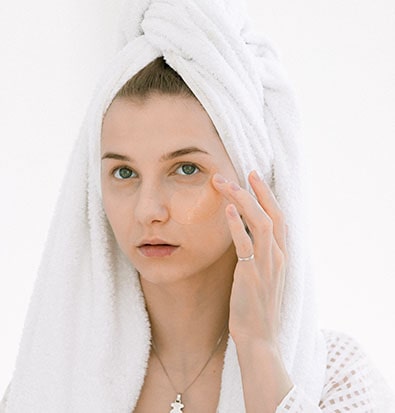
Characteristics of Diffuse Redness
Diffuse redness is a condition caused by an increase of blood flow to the surface of the skin due to dilated capillaries, giving the face – particularly the cheeks and nose – a red, flushed, or inflamed appearance.
Though the cause is the same, diffuse redness differs from spider veins on the face as it is not identified by defined veins. Rather, diffuse redness refers to the overall red ‘flush’ to the face.
However, left untreated, the delicate capillaries can remain dilated, eventually leading to rosacea.
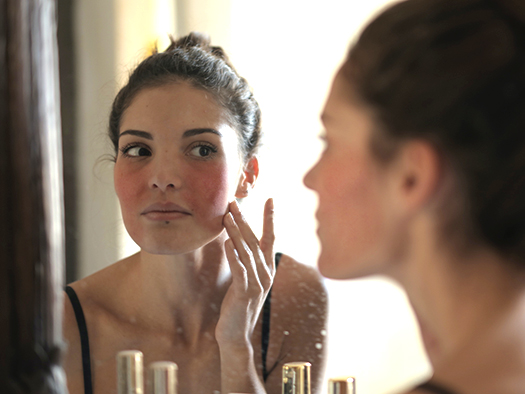
What causes diffuse redness?
Rosacea is closely linked to diffuse redness, and can be a trigger, though there are a range of other factors that can contribute to a flushed complexion, including:
Sun exposure
The long-term effects of prolonged sun exposure can cause capillaries to dilate, resulting in a flushed or rosy appearance that’s warm to the touch.
Alcohol
Alcohol Flush Reaction (AFR) is a condition caused by sensitivity to alcohol consumption. It leaves skin red and flushed as blood vessels dilate in response to an increase in a metabolite called acetaldehyde.
Gut health
Clinical studies have found a strong correlation between gut health and skin. Vitality works holistically to help you identify, treat, and manage gastrointestinal disorders including inflammation, celiac, and small intestinal bacterial overgrowth, to help you glow from the inside out.
Pregnancy
That ‘pregnancy glow’ can often be attributed to a significant increase in the amount of blood being pumped around the body. This increase can cause your blood vessels to dilate, resulting in a flushed or rosy complexion.
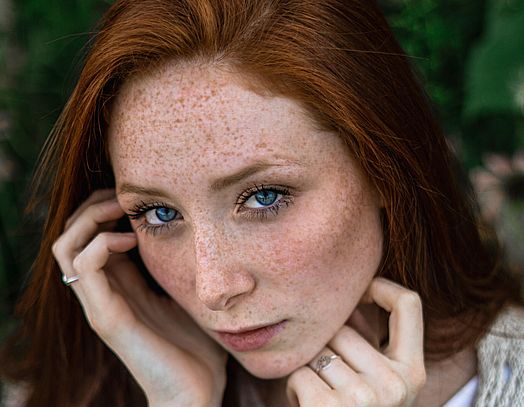
Diffused red skin impact on make-up
Persistent red cheeks may be a cause of embarrassment for many women – and as such, they try to cover up or minimise the appearance of the red complexion.
It’s essential to choose a quality non-comedogenic 100% mineral make-up to ensure you’re treating your face with natural and nourishing products. Mineral make-up is free from irritants that can further irritate and inflame the skin, leading to discomfort and pain.
